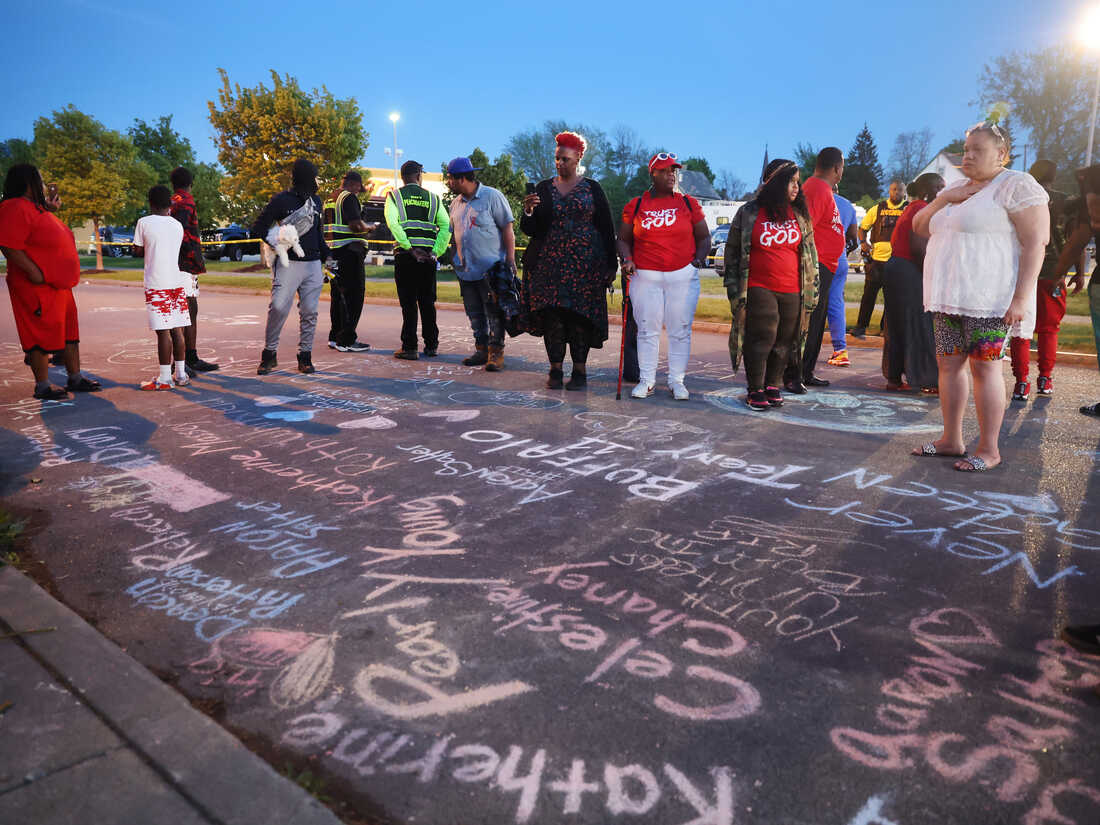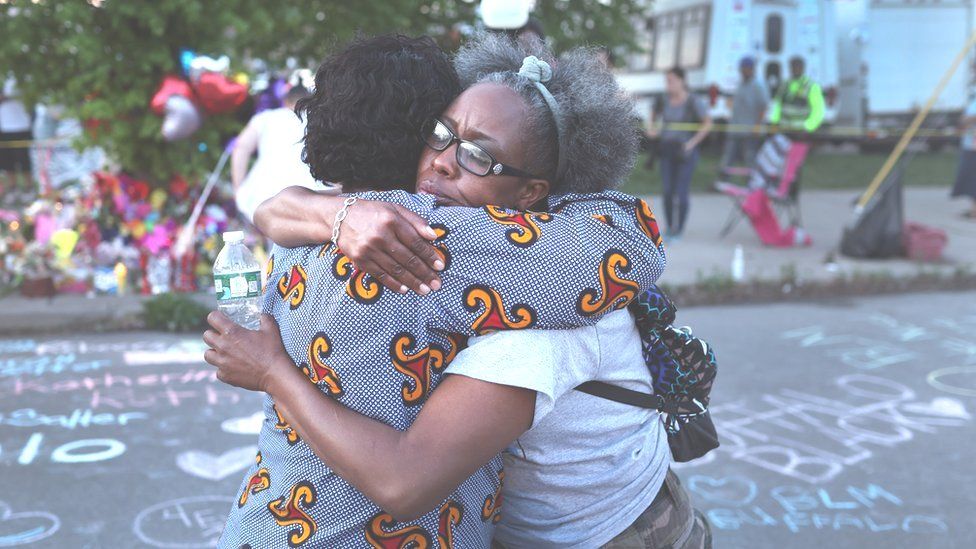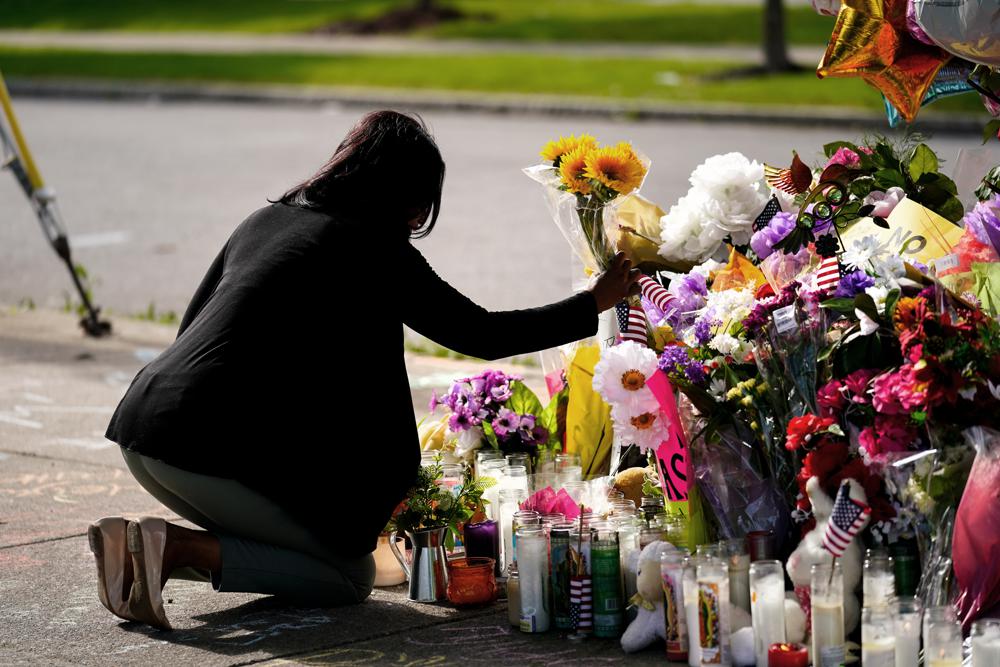""We need to show up. We need to stop asking our Black brothers and sisters how to solve racism. Trust me, if they knew, they would have solved it.""
Rabbi Jonathan Freirich, Buffalo resident and white man
Community Conversation
Media Reporting of the Buffalo Shooting

Racism is a pandemic. It takes Black and Brown lives through subversive, “normalized” unjust policies, resulting in food deserts/apartheids, lowered life expectancy (especially since the start of covid), and higher maternal & infant mortality rates.
But it also takes lives in violent, explosive acts of white supremacy such as the Buffalo shooting that happened last week.
Rather than just reporting on the atrocity, we want to focus on growing discernment and analysis of how media reporting of these losses can either lead towards healing and evolution, or, deepen the racial divide and even influence future attacks (more on that in the first article!) With more awareness of the important nuances of reporting, we can choose to read and share stories with our networks that amplify healing instead of hate.
After a racist attack, which tragically are all too common, it is natural to wonder, “how could someone do this?!” and be drawn in to articles that focus on “the suspect”. As allies, a lot of our work is to be more conscious of how our actions are either supporting racial healing or hurting advancement. This includes how we feed the attention economy! In this case, if we give our time to the suspect, we might be unknowingly perpetuating the automatic centering of whiteness over learning about how black communities are impacted. In reading these three articles shared here, I was moved to read the stories of how tight-knit and supportive the black community is in Buffalo. I can safely assume that this frame is not shared in articles centering on the suspect.
This isn’t to say don’t learn about the suspect and the racist ideologies that fueled them, but consider first how you are seeking information about the Black people whose lives have been taken. Read stories of the holes that are left behind both in their families and communities as well as igniting fear for all Black and Brown-skinned people that this could happen to any of them.
If more people were to do that, we might have a world that channels resources towards repairing what has been broken instead of fueling racism!
Resources
Article
Why you won't see a picture of Buffalo suspect on our front page. This is how we cover mass shootings.
USA Today
Wow. First, this article really upleveled my understanding of the considerations that news outlets need to hold when reporting on racist shootings. Second, it gave me a lot of hope that there are news outlets choosing to take a stand for anti-racist reporting. Third, they end with a strong conviction to be a force for good, “doing our best to provide people-centered, community-based coverage that serves the needs of the persons most affected by this act of violence.”
It does an excellent job spelling out the lines that they make a great effort not to cross, such as: not using the suspects photo and name in the front page and only including when necessary. I was impressed to see they also name the racist discrepancy that often calls Black suspects as young as 14 “men” while 18-year-old White men are referred to as “teenagers”. Then, they share an emotional image gallery and then focus on uplifting the loving and tight-knit Black community. A must read!!
Article
Buffalo shooting: Black Americans describe grief and fear
BBC News
These last two articles focus on the systemic impacts of this shooting. This article looks at the fear it instills in Black Americans and the next shares important perspectives on the history of systemic racism and segregation in Buffalo and how the inequites are impacting current Black residents.
This article helps to humanize the victims of this tragic event, sharing windows into their lives that are only a sliver of the rich complexity and life that defined them. Reading this really helped anchor the understanding that these are real people and not just a number.
It also includes an account from a Buffalo resident who lives right near the Tops grocery store chillingly shares, “We all could’ve been in here”. Worth noting also is that BBC follows a guideline shared in the first article…calling the suspect’s written account a “document” rather than a “manifesto” as it is often being inaccurately labeled.
Article
Buffalo plagued by economic neglect, segregation long before shooting, residents say
NPR
This article just came out yesterday and I’m so glad to have found it because it provides a dimension that I have felt is sorely missing from the conversation that is focused on the event rather than the inequities that contributed to it. This article speaks to how the systemic impacts of racism on Buffalo has made life so much harder for Black residents, including being a target for this act of violence. It’s really important that as allies we are looking for the angles that are not included and seek them out to eduated ourselves!
They wisely included a cross-racial dimension by interviewing a white man whose quote we selected for the top of our newsletter and finished their article with a strong call to action for white people to get involved in the collaboration for justice.


